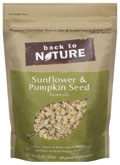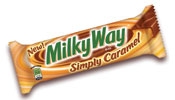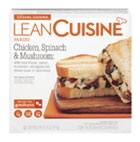
Jonathan Denham, vice president for design and innovation, Kraft Foods
Q: What are recent examples of well-done packaging at Kraft?A: Back to Nature, which was done fairly early on when I came here, was a great piece of work, because it started to get into a new way of thinking about our packaging. The role of the packaging was to carry a new message to the consumer.
Crystal Light, because I think that was a brand that was overdue for contemporization, and I think it had to reestablish itself in relevance to its consumer. It’s [now] much more modern, contemporary and focused on the female consumer.
I would also say Miracle Whip. Again, this is a traditional brand that has been a very good brand for Kraft for a long time. The brand [went] very bold, because they realized they needed to appeal to a broader, younger consumer segment. The role of design was to bring that to life and stamp its authority in that category.
With Oreo, we looked at areas that were important in other [sales] channels. We did some design work that flowed from retail into the alternative channels, and it was incredibly relevant for its business.
The last area I want to touch on is a tribute to our colleagues at Cadbury, and some of the work they’ve done. [The company’s] Trident [brand] has been very successful. I’m British, and the historical heritage of Cadbury and how it has consistently evolved is a great tribute to the strength of that brand.

A: There are some broad principles that revolve around design language. It isn’t just words, it is thinking about the trends in food and how you reduce that to a set of principles by which you can modernize and contemporize your brands. It’s really looking at ‘where is the industry’, ‘what are some of the trends in the industry’, and ‘how do you leverage that and translate it into your brands.’
Q: How can companies like Kraft take advantage of the recession-induced eat-at-home trend?
A: It is a huge opportunity. We’ve started to leverage some of those principles I talked about before, such as how we contemporize the look of our recipes and how we communicate them. It affects everything from components of a recipe all the way through to a complete meal. We’ve spent quite a bit of time thinking about how we contemporize, whether it’s Kraft mayo, Bull’s Eye barbecue dressing, A1 Steak Sauce, Miracle Whip, and so on, all the way to Mac & Cheese. That’s been hugely driven by design and how it shows up on the packaging in the store. Through those areas of focus, and that contemporization through design and packaging, we’re trying to become more relevant to consumers who are going to be using our products more frequently.

Steve Ginsberg, director of strategic brand design, Mars Chocolate North America
Q: What are some recent Mars packages that you’re especially proud of?A: We are doing a good job using our M&M’S Characters in a bold manner to lead communication for the holidays, promotions (such as the recent Character Vote) and new M&M’S Pretzel Chocolate Candies. I like the look of Milky Way Simply Caramel. It retains the essence of the brand while clearly communicating the “all caramel” point of difference. It has great shelf impact. The Snickers Bar twist wrap developed by our packaging engineers is a great enhancement for portion control and storage. It’s a great example of value-added packaging.
Q: What are Mars’ broad packaging priorities? Are there principles that span your highly disparate product portfolio (candy, rice, pet food)?
A: It has to start with the understanding that the package truly is the product, or more accurately, the brand. It’s the most personal component of the marketing mix-the one that the consumer touches, brings home and interacts with. Shelf impact, communicating the brand’s promise, creating equities that are easily remembered, usage occasions and storage are all priorities. All other elements should be considered tools that establish these goals. These include graphics, structure, functionality, sustainability, substrates, etc.

A: Packaging must speak to the shopper’s desires, whether it’s seasonal, sponsorship or any other type of promotion. It must clearly communicate what motivates the target consumer for that occasion or event. This is accomplished via graphic treatments such as color, logos and icons. It must also align with need states or suggest usage occasions such as decorating, gifting or on-the-go. Size, shape and functionality are also common elements to consider.
Q: Candy seems to be viewed as an “affordable indulgence” in these economic times. How can packaging reinforce that?
A: Packaging can help remind consumers of the experiences they enjoy about a brand. Visual expressions of the brand essence, product imagery and rituals related to the package’s feel, usage and storage can all contribute. Promotional “retro” packs are a perfect example; they utilize older logos and graphics to help connect people to a simpler time. Our brands are a very affordable and high-quality indulgence. The packaging has to simply remind shoppers of that.

Anne Roulin, global head of packaging and design, Nestlé
Q: What are some recent Nestlé packages that you are especially proud of?A: There are many. We are especially proud of our lightweight PET bottles for water. Nestlé Waters North America has worked to reduce the amount of PET by 40 percent over the past 15 years. In the USA, we have optimized the packaging for hot cocoa. We have reduced our new hot cocoa carton by six percent in depth, which allowed for a 14 percent reduction in case length. This packaging change has a substantial impact on reducing greenhouse gas emissions, as well as in saving trees. In Hungary, we received two special awards from the Ministry of Agriculture and Rural Development for our 2009 Christmas Kit Kat tree and Smarties Advent calendar.
Q: What are Nestlé’s packaging priorities?
A: Firstly, product protection is extremely important, and here it is critical to ensure that the barrier properties are appropriate.
Secondly, our policy is to reduce the environmental impact of our packaging. We have been systematically reducing the weight of our packaging and, since 1991, have saved over 444 million kilograms [976.8 million pounds]. That said, there are limitations in how far you can go. Beyond a certain point, such an approach will create adverse effects in terms of product spoilage and losses, which far outweigh savings achieved on packaging.
We also promote recovery and recycling, using recycled materials where we can and where the safety and quality of our products are not impaired. We choose materials with an inherently lower impact on the environment (such as materials from sustainably managed renewable resources). In considering the impact of packaging on the environment, it is important not to just take one indicator (e.g. carbon footprint) but to include other parameters like water usage, non-renewable energy usage, solid waste, etc.

A: The trend of eating at home, which is more relevant in times of economic hardship, provides additional impetus for new packaging developments, especially for improving the convenience and product experience. For instance, for our Lean Cuisine range we have developed a proprietary microwave tray that generates grill marks, and results in a panini sandwich that is crispy on the outside and soft on the inside.
Q: What are your thoughts on sustainability and Nestlé’s sustainable packaging strategies going forward?
A: We consider sustainability an enduring trend. Our strategy is to systematically use eco design. To this end we have developed and implemented systems including the PIQET tool, which helps us to develop the best packaging solution. The PIQET tool allows you to compare different scenarios for the impact on the environment (e.g., impact on CO2 footprint, water use, land use, air pollution, energy use, solid waste). We generate spider plots to make comparisons between different materials, so that we can see what the different trade-offs are.
It is important to realize that there is no intrinsically “good” or “bad” material. You have to have the right material for the right application.
EDITOR'S NOTE:
Thanks to our sister magazineFood & Beverage Packaging for the interview transcripts.
